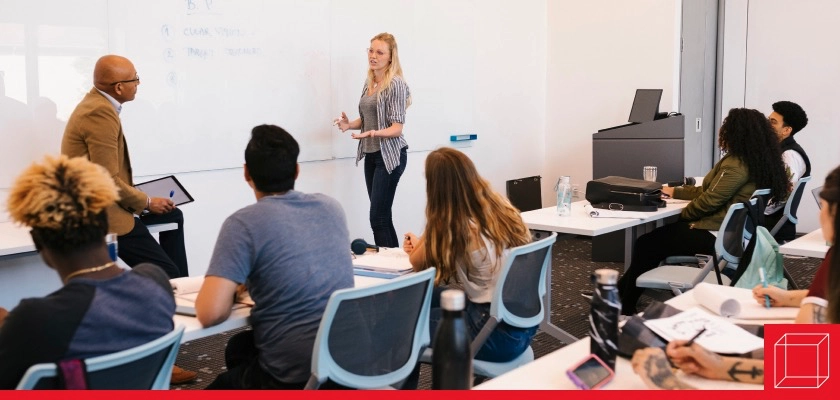Teaching College During the COVID-19 Pandemic
One instructor shares how the COVID-19 pandemic has changed their perspective on what it means to be a great instructor.

Teaching college in the time of COVID-19 is like nothing we’ve experienced before. The global coronavirus pandemic created unprecedented changes in instruction to accommodate new safety measures of remote learning, flexible in-person class schedules, school openings and closings, campus virus testing, not to mention the personal adversities affecting students. Now more than ever is the time to change it up, relate to your students, and make a lasting impact on their college experience! After one year of pandemic life, here are some pointers for instruction:
No Boundaries
In these conditions, there is no separation of traditional college boundaries like classrooms, offices for meetings, geographic distances, residence halls, and off-campus living. The pandemic left instructors no choice but to prioritize safety by breaking boundaries to preserve the learning experience. While in this environment, here are ways we can adapt:
- Support your college and go beyond the usual norms.
Be proactive and flag student issues and class concerns. Keep the Dean and your faculty colleagues updated on what you’re observing and look for ways the school can help. For example, if there’s an increase in the need for deadline extensions, or you’re seeing student anxiety or a lack of focus, work with the college to provide resources for students. - Hold office hours or class outside following social distance guidelines (6-10 feet).
Do this online even if you can meet in person. Be mindful to accommodate to comfort levels of your class to increase student success. - Encourage students to frequently overcommunicate with you and each other.
In times of stress and strain, particularly with an evolving pandemic, it’s important to be in contact, know how students are feeling, and be supportive.
Be Flexible, Fair, and Fabulous
Teaching-through pandemic challenges can be mitigated by being a flexible, fair and fabulous instructor. Be flexible with students’ needs, fair in your stewardship of the class and knock-it out of the park by being an all-around fabulous teacher! Doing this will make for a positive student experience, reinforce accountability for achieving the course learning objectives and will help keep students engaged with the class and look forward to your time together. Instructors can:
- Be fair in how you teach and take a good look at your course material. Do you really need all that lecture information? Are your materials updated to account for and address a world that’s facing a pandemic? Level-set your course material through the prism of what’s really needed in this new environment.
- Be flexible and schedule office hours to accommodate remote learning students located in different time zones. Or, show flexibility with assignment deadlines.
- Be a fabulous instructor and show empathy to students, communicate to them with optimism and teach in ways that shows you can relate to the real-world issues caused by COVID-19. Consider taking frequent class breaks to give students a brief mental break or time to get up and move around. Gain and sustain student engagement by being creative with lectures that integrate props, student polling, and videos. Have fun by starting or ending class with an icebreaker or activity that may or may not relate to the coursework.
Common Experience Leads to Engagement
Establish commonality in the shared pandemic experience. Instructors and students are together living through an unprecedented and stressful event. Help galvanize the class to be engaged and focused:
- Use class time to bond with students. Acknowledge that you’re all managing a tough situation together. None of us wanted the pandemic and all that came with it, and as class, you will make the best of it while together.
- Be relatable to students. Just like them, you also have to manage class work. Convey tips or tricks you’ve learned to balance school and personal life. Share challenges you’ve experienced and ways you’ve had to adjust unexpectedly.
- Crowdsource with the class effective ways students can manage college course loads. For example, leverage group thinking and ask students to share, either in class or on a discussion board, any effective studying techniques.
Be that instructor that students remember years from now who, during an unprecedented global pandemic, went beyond the institutional norms, was fair, relatable and made a real impact on their college experience.


